It is the responsibility of artists to pay attention to the world, pleasant or otherwise, and to help us live respectfully in it.
Artists do this by keeping their curiosity and moral sense alive, and by sharing with us their gift for metaphor. Often this means finding similarities between observable fact and inner experience—between birds in a vacant lot, say, and an intuition worthy of Genesis.
More than anything else, beauty is what distinguishes art. Beauty is never less than a mystery, but it has within it a promise.
In this way, art encourages us to gratitude and engagement, and is of both personal and civic consequence.
—Robert Adams
Subscribe to my weekly newsletter featuring all my content from the week.
It was clear to me early in the week that I wanted to write more directly about art and that I wanted to consider the question of whether AI could make art.
Much of the criticism of AI generated art revolves around the idea that AI isn’t human, doesn’t have the experiences of a human, doesn’t feel the way humans do, doesn’t suffer the way humans do. Therefore, it can’t make art. At least not in the sense suggested above by Robert Adams.
I started this post with the idea that I would make the case that art needs humans and functions best when, as suggested above, it is a process of comprehending, connecting and inspiring. That it’s a human to human gesture and can only be meaningful in that context. The problem with this thesis is that humans are, for now at least, required to start the AI process of making an art object.
Did you know that ’prompt engineering’ is one of the hottest jobs in generative AI? A Prompt Engineer specializes in asking the right questions in order to get the best results from AI. This means that there is a moment of opportunity for human creativity (or lack thereof).
I imagine museum worthy art will arise out of the interface of generative AI and gifted artists and that AI will become a tool of working artists just as cameras became a tool of working artists. Some artists will specialize in prompting AI into the generation of art. It will be their medium. And exceptionally talented individuals will tease out of it “a moment of intuition worthy of Genesis.”
When the photographic process was invented many artists, especially the painters, were hostile towards it. They worried that it would devalue their work much the way artists worry AI will devalue their work now. Before long though cameras were embraced as both an art medium and a tool in the artist tool box. Human beings were required to generate anything from it. As long as humans are required, there is the possibility of art. We give tools purpose. This doesn’t mean there wasn’t disruption, as some illustration work, fore example, was replaced by photographic representation, depriving some artists of a means to support themselves while those embracing the new tool had new horizons for monetization.
A lot of people will use AI to make “art” in the same way that they use cameras to make “art.” They will share it on social media and many will get generous appreciation from their friends and acquaintances. With a little compositional skill, it is easy to make an image that makes people feel something and they will like it. But is that art?
I recently revisited the Hipstamatic app on my iPhone. It’s an app that mimics the effects of plastic cameras. It applies a set of filters to the photograph to give it a ‘look.’ Here is an example:

The picture on the left has the Hipstamatic effect. The one on the right is straight out of the iPhone camera. Which do you prefer?
I have always been hesitant to make Hipstamatic effects a part of my art practice. It felt like cheating to me. It felt like a superficial way to engage people through, in this case, their fondness for nostalgia. And it does work. Consider this photograph I made and shared last week:
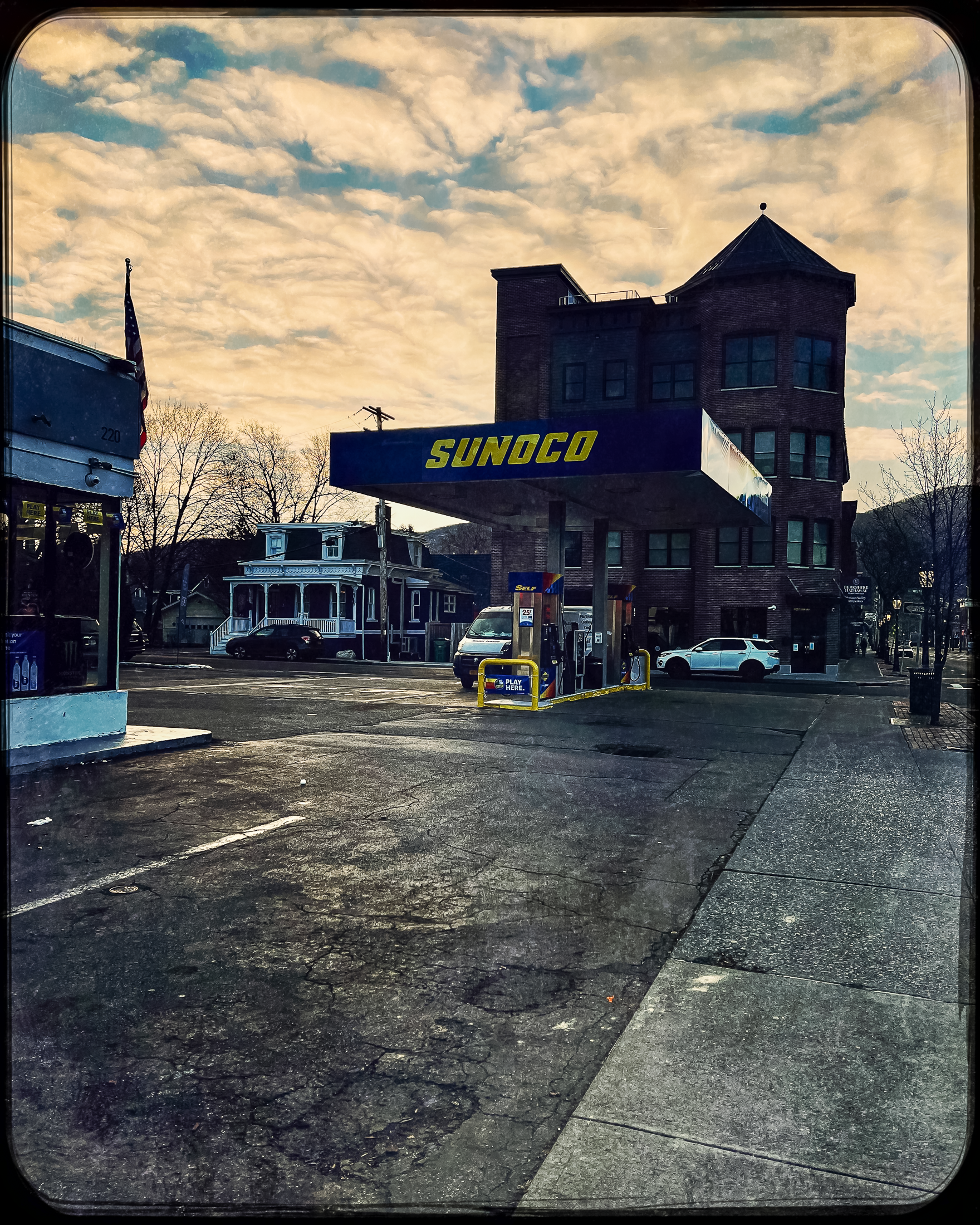
It prompted much more engagement from the community I shared it with than most of the other photographs I have shared with them. Most of the time I get no response at all.
Here’s an image that is more typical of the pictures I like to make and share:
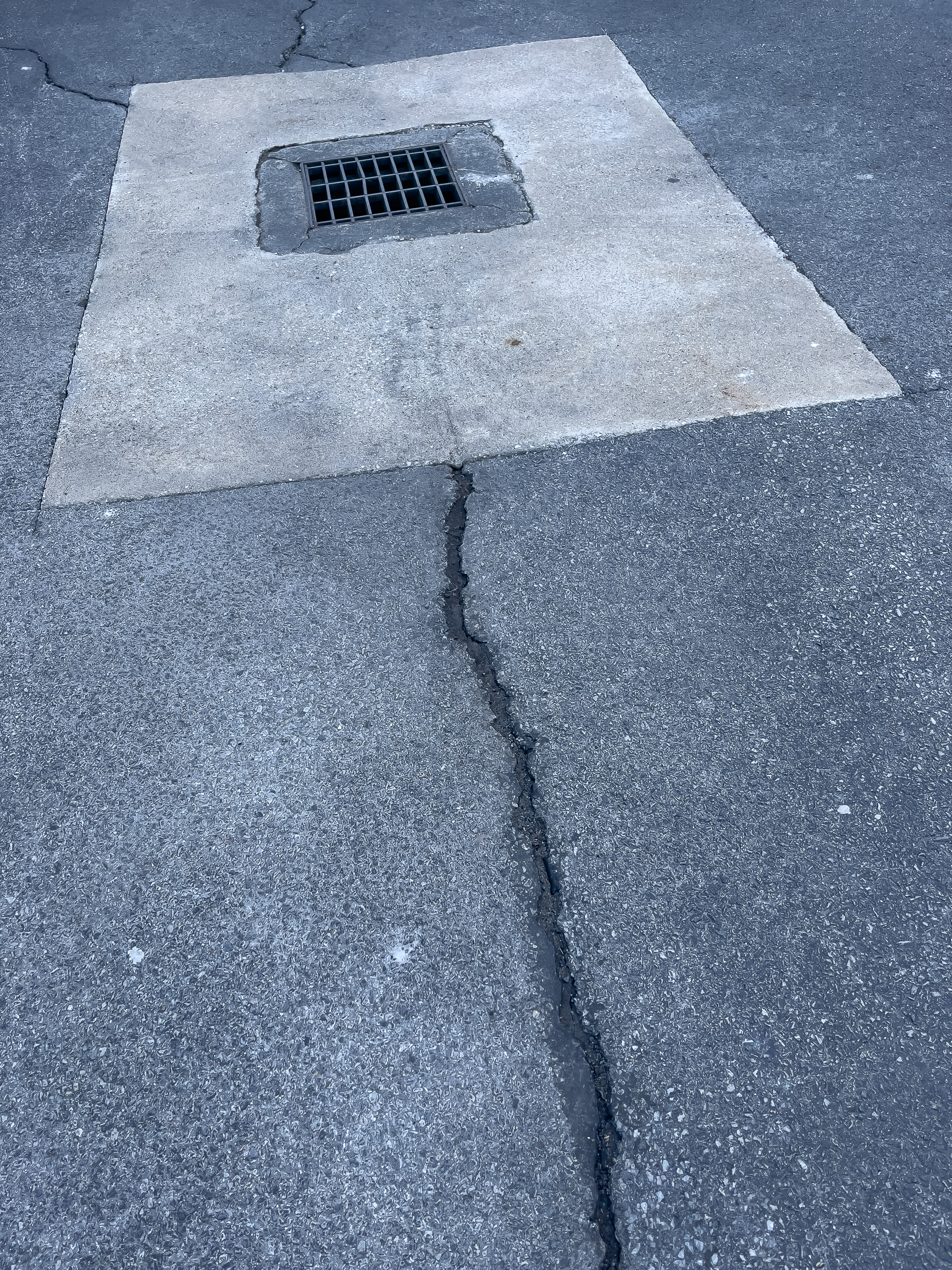
Which attracted you more? The Hipstamatic version of the Sunoco gas station or this ‘abstract’ made by composing the drainage basin, concrete pad, asphalt and crack in the asphalt within a rectangular frame. If you said the Sunoco picture, emotionally, I agree with you. Intellectually, I prefer the drainage basin abstract.
Don’t get me wrong, I love nostalgia, just as most people do. It’s like mashed potatoes, comfort food, but I don’t want to make work that panders to that nostalgia love but does little else. Art needs to contain more than an emotional hook for me. As I sit here writing about it, I have to acknowledge that one could make a legitimate art portfolio with the Hipstamatic app and that perhaps I should attempt to do so. Such a portfolio would have to be exploring something conceptual, like making a demonstration of how anything can be made appealing if you put the right color glasses on to look at it and what does that mean about us and society. Something like that might head in the direction of a worthy intuition.
A lot of what people will make with generative AI will be compelling, but it won’t be art in the sense that Robert Adams tries to get at in the quote I started this post with. What will happen, unfortunately, is that it will further devalue the artist in the eyes of the general public, because “my five year old could make that.”
A little over a week ago I attended the opening of an art show at the Public Library in Saugerties, NY. It was a good show. Each of the artists was asked to make something out of a discarded book. The results were amazing. It was fun to attend the opening and talk with the artists or eavesdrop as they talked with friends. This is not, I thought, the kind of assignment one could give to AI. An artist working with AI might prompt it to generate some of the materials to be incorporated into the work, but making three dimensional art out of found materials seems beyond the present capacity of AI. There’s also nothing quite like the experience of being with art and artists in the flesh. Human to human.
Here is some of the work I saw:
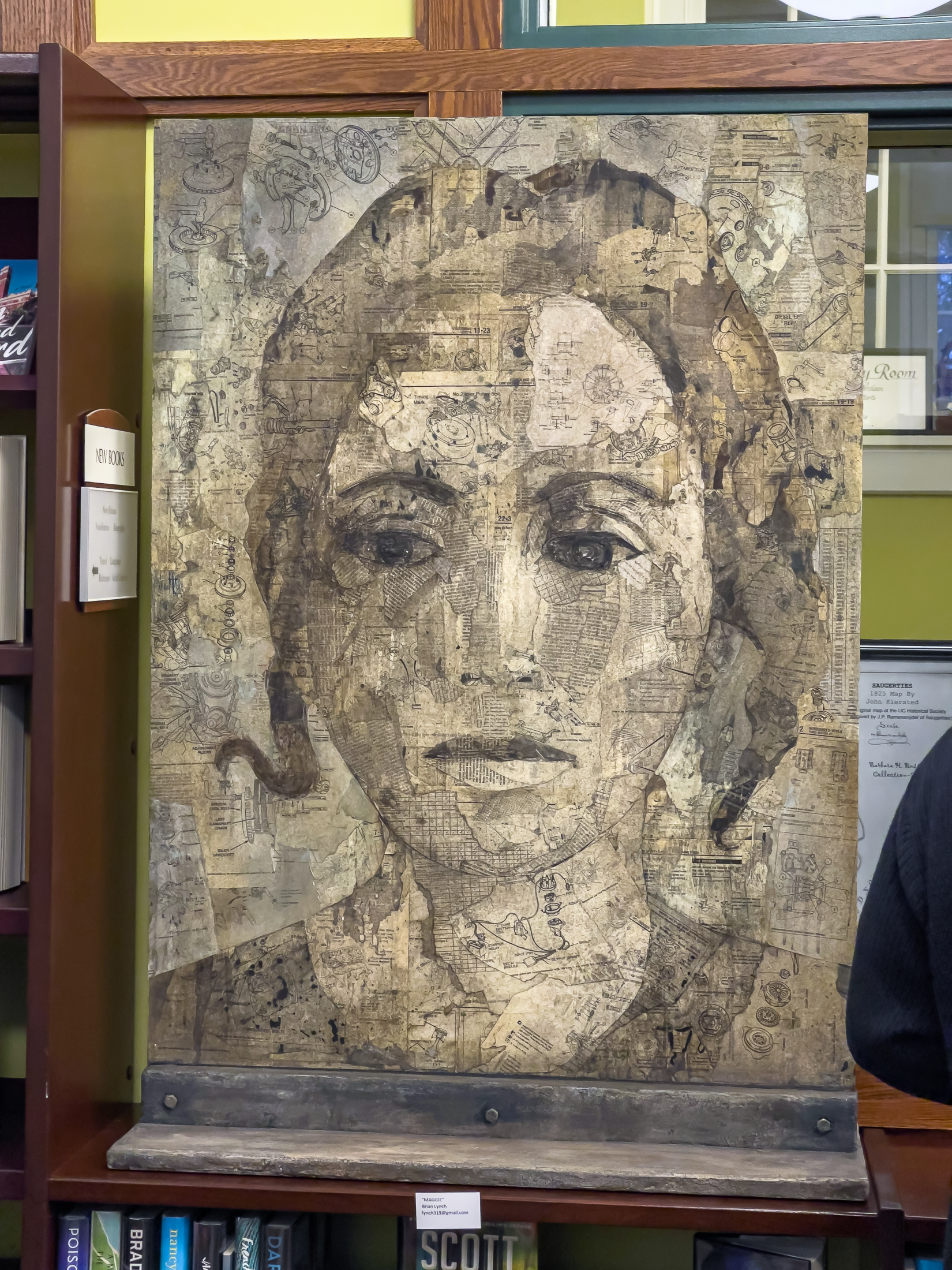
”Maggie” Brian Lynch
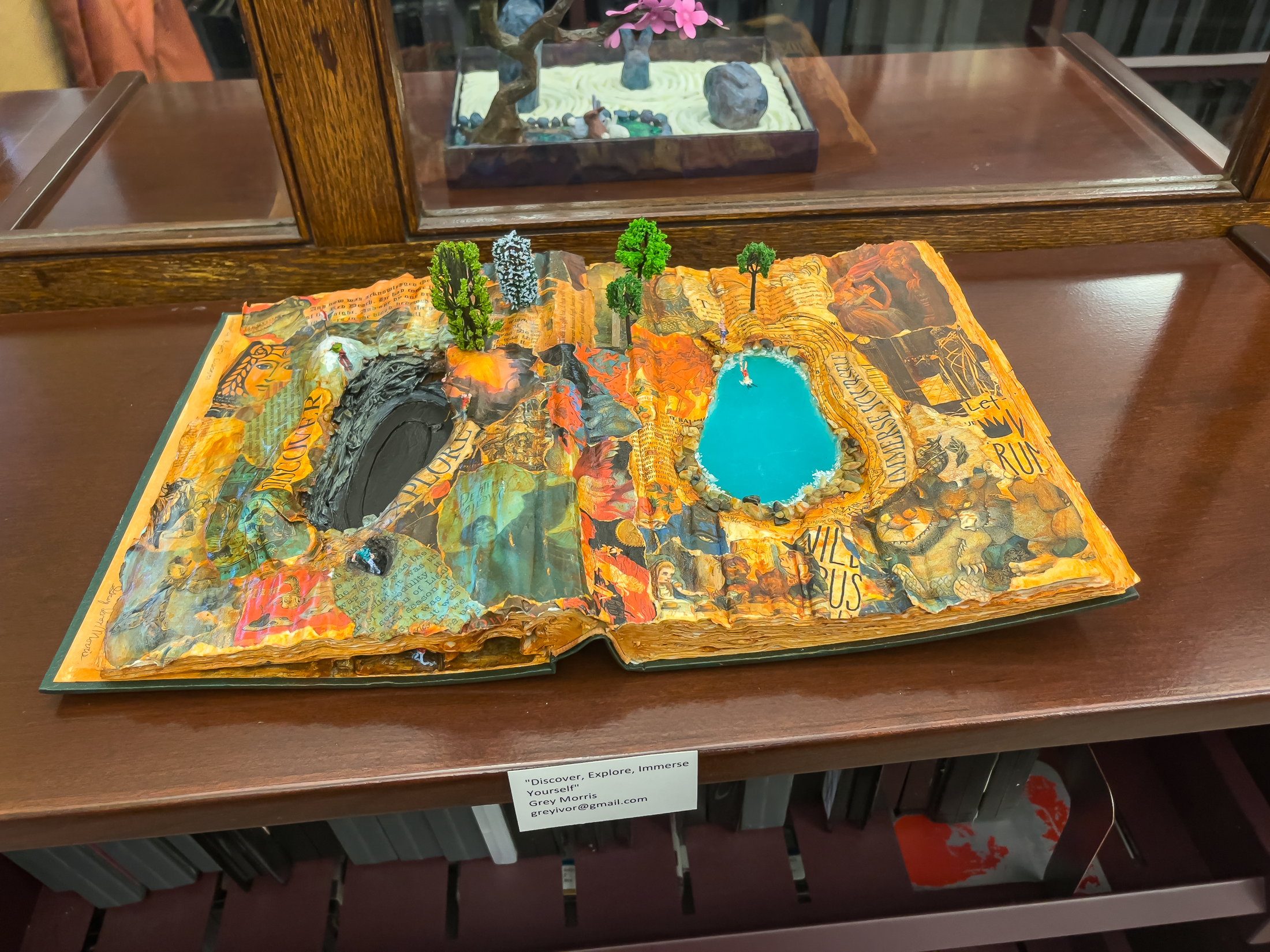
”Discover, Explore, Immerse Yourself” Grey Morris

”Once Upon a Time” Ann Morris
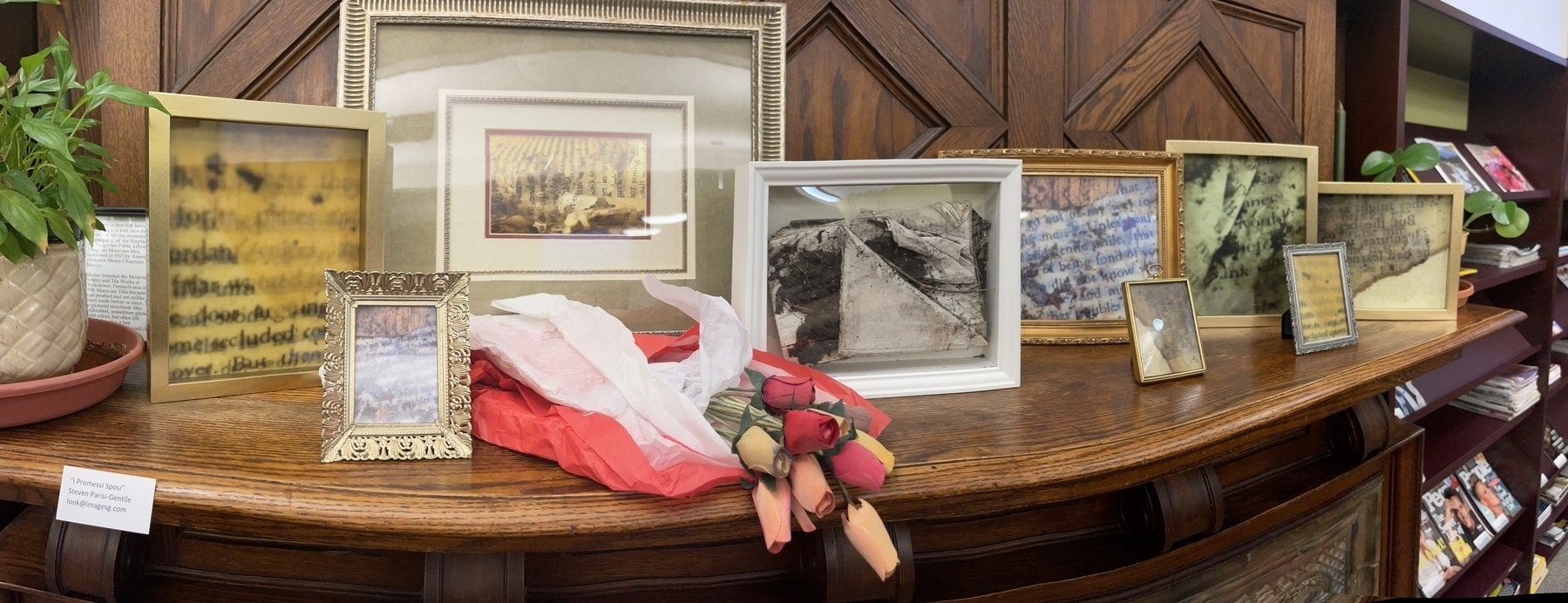
”I Promessi Sposi” Steven Parisi-Gentile
I am comforted by the idea that there are modes and vehicles of human expression that are hard for AI to tackle. That even with AI, gifted human interface will still be needed to make the best art, and that getting together and sharing art is the more fulfilling experience.
I wonder if I could become a good prompt artist? I think I am going to have to play with it some. I will report back when I do.